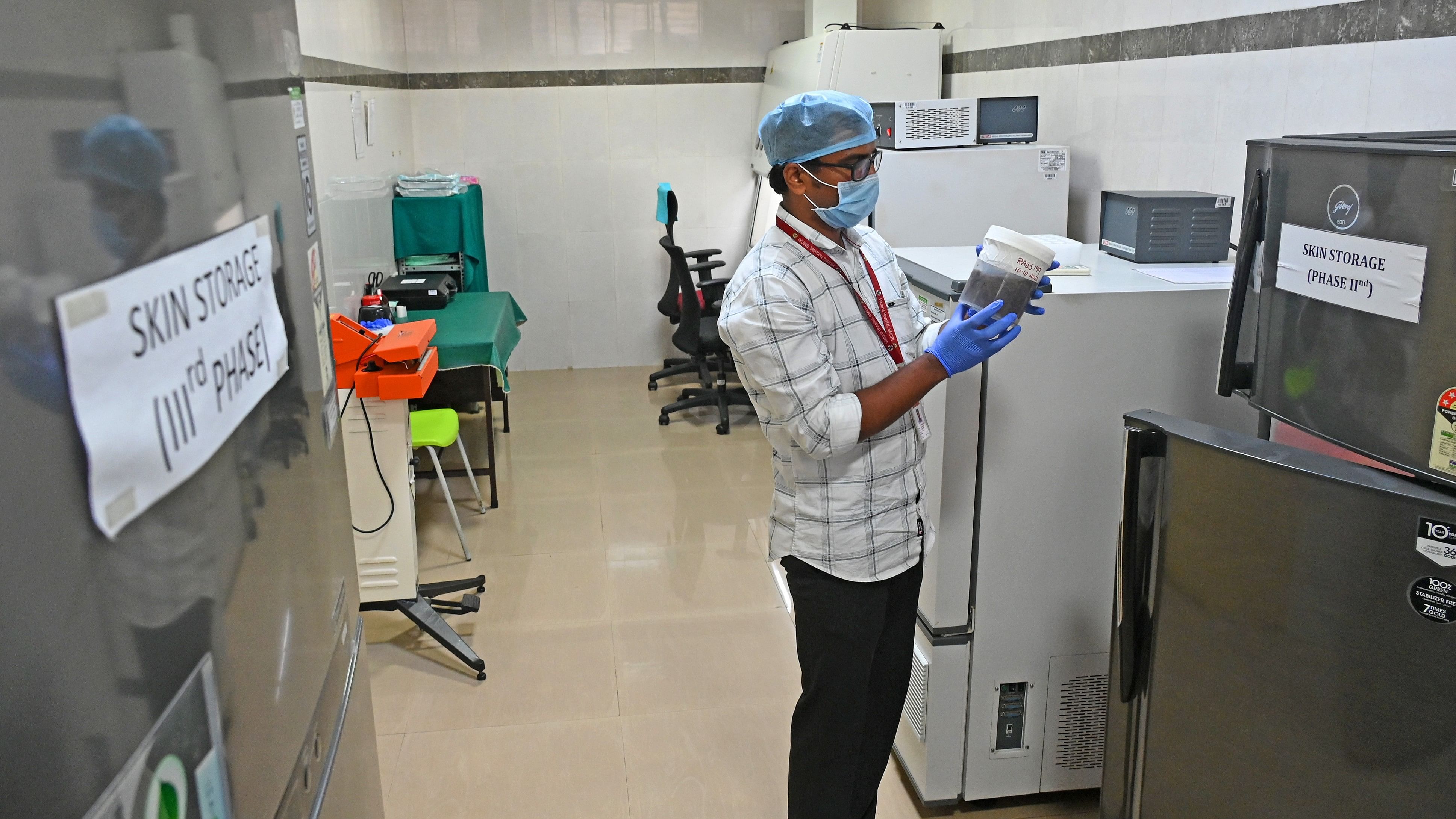
The bank currently has 10,000 square metres of skin.
Credit: DH PHOTO/PUSHKAR V
Despite an increase in donations at the Rotary Ashirvad BMRCI skin bank post a Covid-induced slump, doctors say that numbers have dipped again. Skin harvested from deceased donors is instrumental in saving the lives of patients with over 40 per cent burns.
The skin bank, the only one in Karnataka, was set up in 2016 by Rotary Midtown at Victoria Hospital.
During the first and second waves of the pandemic, the healthcare providers at the bank were assigned Covid duties. This led to a drastic deficit in skin donations. However, since then they had been harvesting skin from five to six donors a month.
In the past quarter, that number has reduced to two-three donors a month, says Dr Gunasekar Vuppalapati, a plastic surgeon who was part of the committee that set up the bank. They are down to 10,000 square centimetres of skin at the moment, he shares.
Long recovery
Patients with severe burns typically need months of care and are usually admitted for close monitoring during recovery. Currently, Bengaluru has two main centres dedicated to the care of burn victims — one at Victoria Hospital, Mysore Road and another at St John’s Hospital, Koramangala.
“Most of the time, beds at both the centres are fully occupied,” he says.
The donated skin is used like a ‘biological’ dressing on burn victims. It has to be changed every three to six weeks, explains Dr Ramesha K T, who works at Victoria Hospital.
Using real skin for dressing wounds helps reduce pain, and chances of infection, dehydration and loss of
temperature, all of which can be fatal. It is also preferred because it is breathable, unlike artificial dressing, he explains. Due to the shortage, the skin is being used only for paediatric patients and adults with 50% burns or more, says the doctor.
In the UK, burn victims are treated with processed and sterilised pig skin, shares Dr Gunasekar. As soon as a patient comes in, they cover the wounds immediately. Because of this, 80-90% of them survive. The same model is not possible in India, because the food processing industry is not as evolved, he says.
No age limit
Uma Venkatesh’s mother was 87 when she passed away a year ago. The retired software professional shares that she had no second thoughts about donating her mother’s skin, when she learnt how many people it can help. “The process was quick and clean,” she shares. They harvest the skin from the leg and back, where wrinkles are less, she adds.
Sridevi Rao, a media professional, explains that though many people pledge their eyes, kidneys and other organs, not many are aware that skin donation is also a possibility. Her mother, who was bedridden for five years, heard about it three years ago. When she passed away two months back in Manipal, her sister ensured her decision to donate her skin was carried out. They used a peeler to harvest a thin top layer of skin, she shares.
In January this year, 11-year-old Nirmay dressed in a silk shirt and panche (dhoti) inadvertently set himself ablaze while trying to light a lamp at a temple festival. As his parents and other adults were not nearby, he was covered in 48% burns by the time he was found.
“The skin on his legs, thigh, stomach and back were completely burnt. Doctors said there’s no guarantee that he would make it. But they were able to treat him with the skin from the bank and save his life,” says Nirmay’s father, A R Vinaykumar. Nirmay was discharged from Victoria Hospital four days ago, says Dr Ramesha.